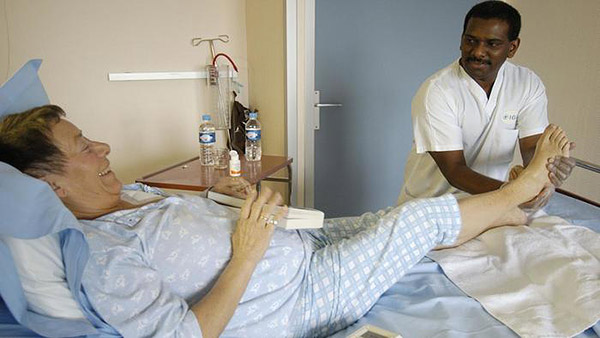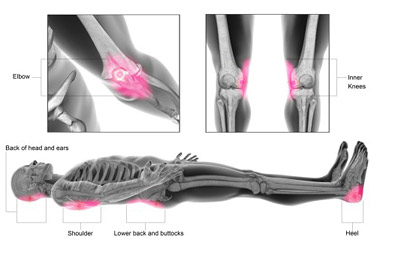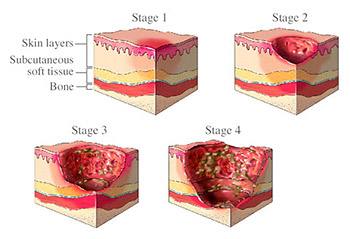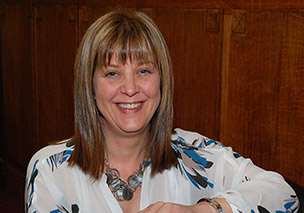Uni experts aim to cut the costs of pressure ulcers

Thu, 07 Jan 2016 00:00:00 GMT
Research team calls for new educational initiatives to improve skills and awareness in the healthcare sector
◄ Dr Karen Ousey
PRESSURE ulcers – resulting from factors such as immobility by elderly patients and residents in hospitals and care homes – can have serious medical consequences, requiring plastic surgery in extreme cases. Also, they pile huge extra costs on the healthcare system. Now research by University of Huddersfield experts has led to a call for nationwide improvements in education so that staff in nursing and care homes can develop the skills and knowledge that are needed to curtail the problem.
The University is home to the Institute of Skin Integrity and Infection Prevention, headed by Dr Karen Ousey, who is Reader in Advancing Clinical Practice in the School of Human and Health Sciences. She has co-authored a new article in that appears in the Journal of Wound Care, entitled “Investigating staff knowledge of safeguarding and pressure ulcers in care homes”.
Alongside her colleagues Dr John Stephenson, Vicky Kaye and Karen McCormick, Dr Ousey devised a questionnaire that was completed by 65 staff in care and nursing homes within the area covered by a single clinical commissioning group. They were asked to assess their experiences of avoidable and unavoidable pressure ulcers, the systems for grading them, and the procedures that are in place for referral to the safeguarding teams that are based within health trusts or clinical commissioning groups.
► Diagram showing the most common places for pressure ulcers
Diagram showing the most common places for pressure ulcers
The project also included in-depth interviews with staff members in four nursing and care homes. It was concluded that staff understood the fundamental issues surrounding pressure ulcers and the importance of reporting skin damage. But a national education programme was needed “to develop knowledge and skills to promote patient health-related quality of life, and to reduce the healthcare costs of pressure damage”.
In addition to the new journal article, the University of Huddersfield team will present their findings at conferences during 2016, including the European Wound Management Association meeting in Bremen in May. It is also intended to carry out further research in the field of pressure ulcers, which used to be termed “bed sores” but are equally likely to be incurred from sitting in a chair.
Dr Ousey explained that the project had arisen from a conversation with members of the safeguarding team at a clinical commissioning group. They stated that they received reports from care and nursing home staff of pressure damage that turned out to have been avoidable with the right precautions; and they also encountered avoidable cases that had gone unreported.
There was uncertainty about the levels of knowledge among staff at the homes, leading to the conclusion that more education was needed.

◄ The four stages of pressure ulcers
“Staff are really keen to know about managing and preventing pressure ulcers, but they couldn’t access education very easily,” said Dr Ousey. “In many cases they were relying on other members of staff or district nurses to come and teach them. There should be more formal education available and staff should be made aware of it.
“Also, we shouldn’t forget that there is a huge care sector that’s not part of the NHS and as the population continues to age, we are going to see more and more older people going into care and nursing homes where staff need to be educated and trained.”
Another issue that arose during the research was a lack of communication at the point where a patient was transferred from hospital to a care or nursing home, with no clear indication of whether any pressure damage had been incurred. If they had prior knowledge, staff at the home could pre-order devices such as special mattresses and cushions designed to alleviate pressure problems.








